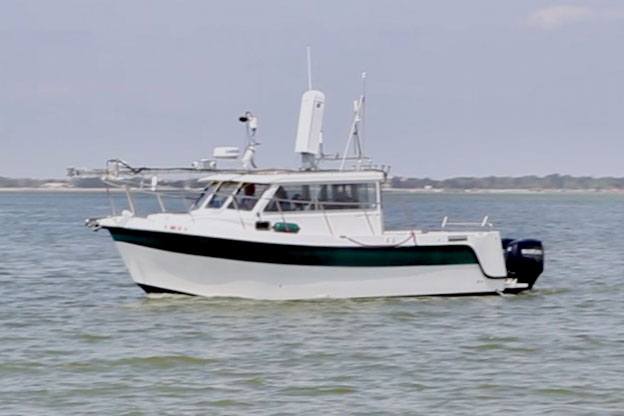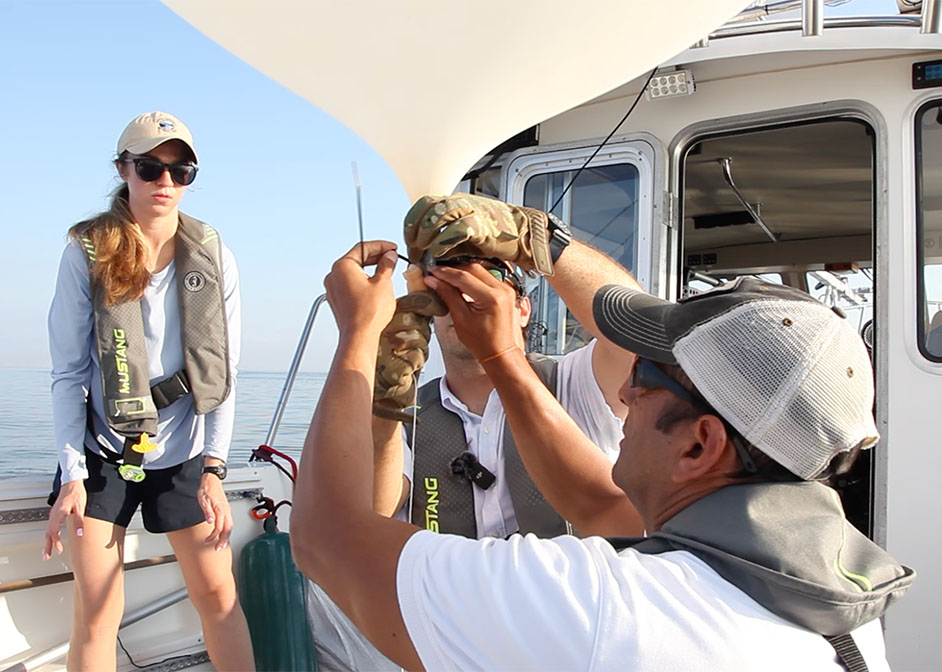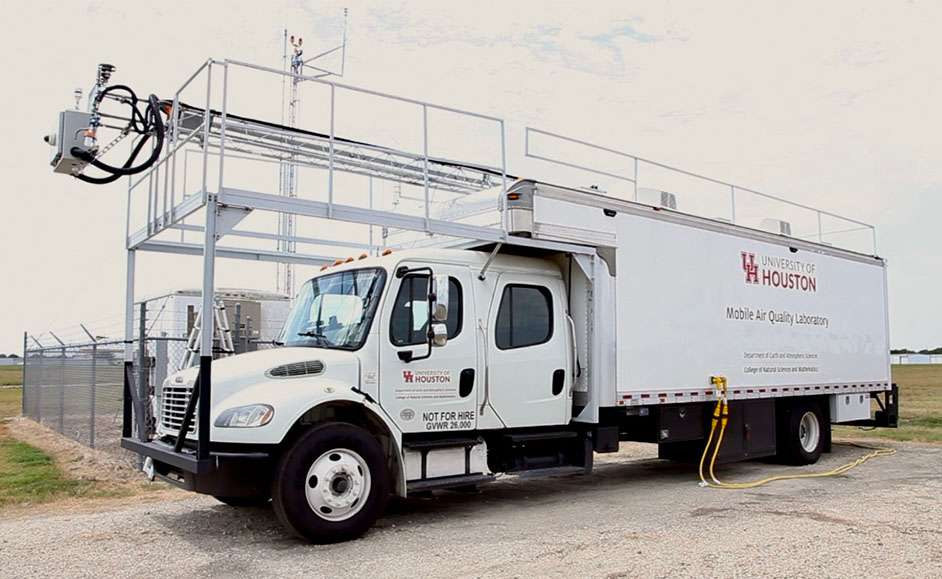Mobile Air Quality Laboratory and Atmospheric Research Boat Allow Students to Go Further with Studies of Houston’s Air
Houston, known for its plethora of chemical plants, industry and never-ending traffic jams, is the ideal location to conduct air quality studies.

The University of Houston’s Department of Earth and Atmospheric Sciences addresses this need with an initiative that incorporates a hands-on research approach for faculty and students. This is made possible with the help of an atmospheric research boat and mobile air quality laboratory.
“What we’re tasked to do is collect air quality data over Galveston Bay and the Gulf of Mexico,” said Travis Griggs, an EAS postdoctoral associate.

Griggs is part of a UH Institute for Climate and Atmospheric Science research team that scours the sky from land, sea and air to unravel the effects of pollution on our environment.
Expanding Research Capabilities
The research boat, a Pacific Northwest-style fishing boat, gives UH an advantage because it allows the team to go further when collecting data and for longer periods of time.
“We’re able to carry a much more complete payload that is similar to what we were using in our previous mobile lab,” said James Flynn, EAS research associate professor with the UH College of Natural Sciences and Mathematics and member of the atmospheric research team.
Flynn and his group previously used a pontoon boat, which limited their distance and added additional complications.
“The pontoon boat had a smaller fuel capacity and exposed our crew to the elements because it was completely open,” said Flynn. “Our new boat makes these trips a little easier thanks to an air-conditioned cab that’s enclosed, a restroom and larger fuel tanks.”
In addition to the boat, a larger mobile air quality laboratory was added to the department’s arsenal of air quality monitoring tools.
Recently, both research platforms have been used to collect data that is being compared with measurements taken by NASA’s TEMPO satellite that launched in April 2023.
“We’re one of the first groups to be able to coordinate satellite measurements with our ground measurements,” said Flynn.
“This satellite conducts high-resolution scans of our area while we have our boat out,” said Griggs. “This allows us to compare our data with the satellite’s data and make adjustments as needed.”
The boat will be involved in future projects in addition to work with the TEMPO satellite.

“This will allow us to launch weather balloons from areas we previously couldn’t access on the water,” said Tabitha Lee, an atmospheric sciences Ph.D. student and researcher at UH. “We can look at the vertical profile in the data as the balloon is rising to see how ozone changes through layers of the atmosphere.”
Air Quality Monitoring with NASA
Over the past three years, the UH group has conducted a variety of studies that were part of multiple collaborations with government entities and other institutions.
The first year involved research with local NASA aircraft operations. The following year, the group worked with the Department of Energy’s TRACER study. TRACER, known as Tracking Aerosol Convections interactions ExpeRiment, involved dozens of scientists who traveled to Houston to study the impact of pollution on clouds and storms.
“In our third year, we’re building on what we’ve learned the first two years,” said Flynn.
In 2023, UH participated in NASA’s Student Airborne Research Platform (SARP) East campaign at NASA Langley Research Center in Virginia. UH students worked with students from Baylor University, St. Edward’s University and other institutions around the country on individual air quality research projects using NASA planes. Flynn drove the UH Air Quality Mobile Laboratory to Virginia to demonstrate the lab’s capabilities to the research community while participating in SARP.
Also this year, UH took part in the SO2 and Ozone Water-Land Environmental Study at Langley in partnership with NASA and St. Edward’s University. The project involved collecting sulfur dioxide measurements from NASA’s steam plant near Langley.
- Chris Guillory, College of Natural Sciences and Mathematics